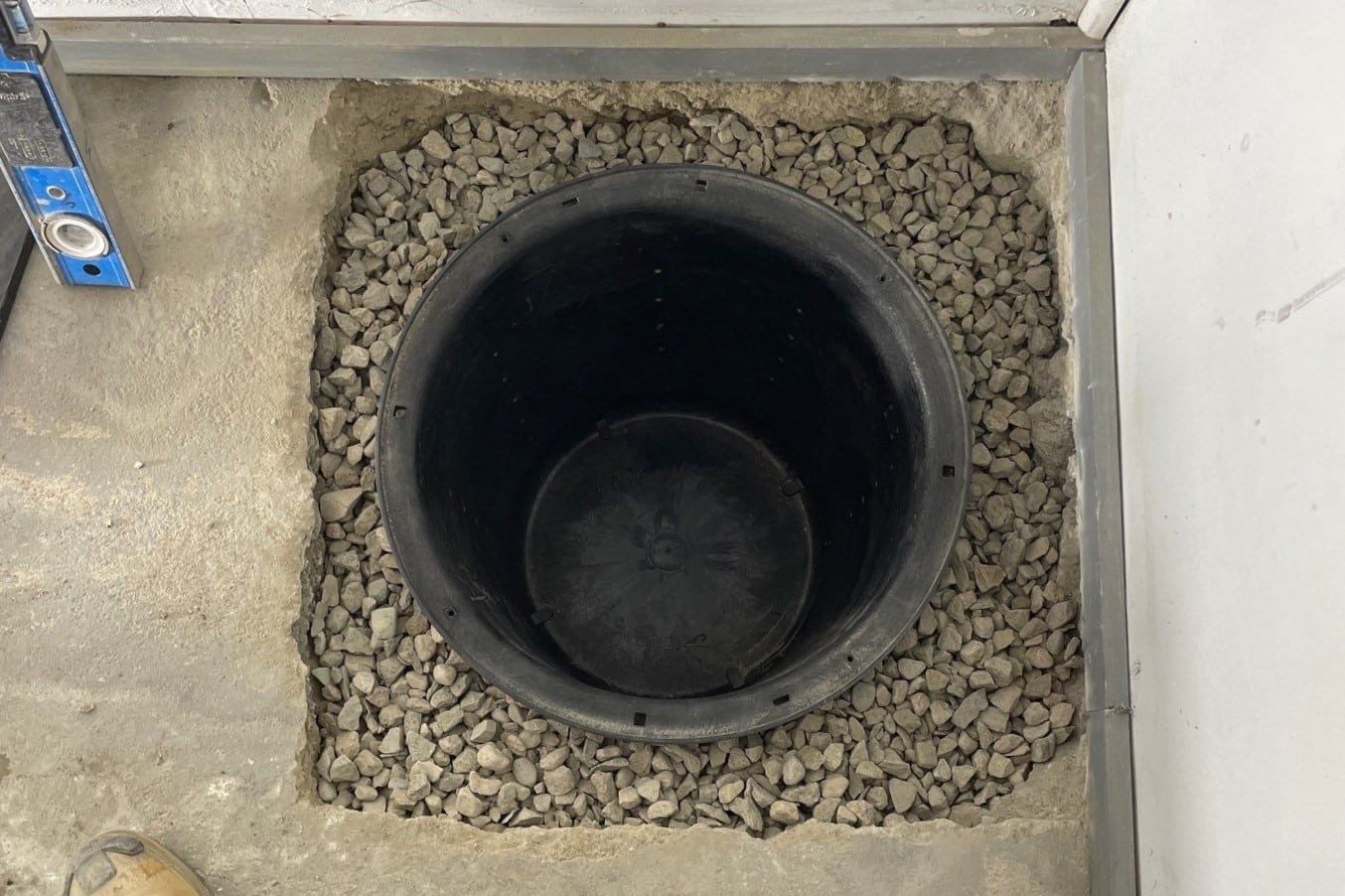If you’ve taken the time to scan our blogs, you’ll see that we’re pretty much always recommending installing a sump pump. These simple devices can be real workhorses when it comes to waterproofing your basement. They are, as the name suggests, a pump that empties a sump—otherwise known as a pit. But what is a sump pit, and how does it help keep your basement floor in good condition?
What is a Sump Pit?
A sump pit is a specially constructed pit designed to collect water. They’re used in all kinds of applications that require dealing with water, but when it comes to basement waterproofing, they’re generally attached to a sump pump.
At its simplest, a sump pit is just that—a pit dug into the ground to collect water. When installed as part of a basement waterproofing system, they’re generally lined with either concrete or plastic to prevent cave-ins and connected to other drainage systems.
A basement sump pit is generally sunk into the floor of your basement or crawlspace. It provides an easy place for groundwater to gather as it rises and serves as a handy endpoint for any interior French drains. Sump pits can be constructed of various materials (generally plastic or concrete), and there are several variations on the theme that we’ll get into later.
It’s worth noting that the “sump pit” and “sump pump” are different things, though they are closely connected. The term “sump pit” refers exclusively to the sump itself—the basin below the pump. When talking about the entire system, people might refer to it as “the sump pump,” which includes the pit, though this isn’t entirely accurate as the pump is the device itself.
How Does a Sump Pit Work?
Now that we’ve answered the question, “What is a sump pit?” the next logical step is to look at how it works.
At its most basic, the sump pit offers an empty space for water to collect. Water will always take the path of least resistance, and a void presents just that when compared to a solid concrete slab. Water finds its way into the pit either via the natural flow of groundwater or from your perimeter drains. It’s contained here until it fills to a pre-designed level.
When the sump pit fills to a certain level, it activates a float switch, turning on the pump. The pump spins an impeller, creating an area of negative pressure and pulling the water up and out of the pit through a discharge line. This line may connect to municipal storm drains or simply discharge the water away from your foundation. The important thing is that the water is diverted away from your basement before it can cause damage.
Why is a Sump Pit Important?
While not every home absolutely needs a sump pit, they can work wonders for waterproofing. In particular, they’re helpful for:
- Preventing water accumulation and flooding
- Protecting basement floor slabs
- Preserving the structural integrity of your foundation
- Reducing moisture levels in your basement, lowering the risk of mold and mildew growth
If you live in an area with a high water table (the depth at which the soil becomes waterlogged) or that gets a lot of rain, installing a sump pit and pump is a fantastic investment.
Types of Sump Pits
Having looked at the answers to “What is a sump pit?” and how they work, let’s explore the different types.
All that’s really needed for a sump pit is a hole in the ground. These have been used to collect water for as long as we’ve been building structures. Naturally, there have been developments over the last few thousand years, and we now have two main categories based on the nature of the supporting structure:
- Prefabricated: A ready-to-go container, generally made of plastic or concrete. These are often perforated to allow water to enter from the surrounding soil.
- Custom: Made to measure, allowing you to customize your sump pit to fit your needs. This lets your sump be deeper, wider, or tailored to your specific requirements.
Other features might include lids to block the smell of stagnant water. These also prevent objects from falling into the sump pit, where they could clog the pump, and help reduce the amount of radon that seeps through.
Another innovation is the introduction of perforations in the walls of the sump pit, allowing more efficient inflow from the surrounding soil rather than relying solely on water being forced in from below.
Installation Process
Installing a sump pump is generally a straightforward task for professionals. It can be done during initial construction or retrofitted to existing buildings with minimal disruption. Since the work is contained in the basement, there’s little impact on the rest of the site, so there’s no reason to delay installation.
The process typically includes:
- Site visit and inspection. Ensuring the sump pit is placed properly for maximum efficiency.
- Digging the pit. Once the location and depth are determined, the sump is dug.
- Installing the liner. The liner reinforces the walls of the pit to prevent collapse and is made of plastic or concrete.
- Connecting drainage systems. Any French drains are connected to the liner, and the pump is installed.
- Placing the drainage line. The discharge line is connected to municipal storm drains or directed far enough from the foundation to avoid simply relocating the problem.
Although this process is relatively simple, it’s best left to professionals to ensure optimal placement, proper design, and compliance with local codes and regulations.
Maintenance Tips for Your Sump Pit
Sump pits are simple systems and require minimal maintenance. The primary task is to clean the pit regularly, removing debris or sediment that could cause clogs or blockages. Inspect the pit for any signs of damage while you’re at it.
Regularly test your sump pump to ensure it’s working properly. Open the sump pit, pour in enough water to activate the float switch, and verify that the pump is removing water efficiently. Listen for any unusual noises that might indicate wear or blockage.
Schedule an annual professional inspection to ensure everything is in working order before the rainy season starts.
Signs You Need a Sump Pit
Sump pits aren’t necessary for every building, but they are highly beneficial where needed. Consider installing one if you experience:
- Recurring basement leaks or flooding: A single event might not justify the expense, but frequent issues signal a need for a sump pump.
- High water tables: When the water table is near the surface, rainwater has nowhere to go. A sump pit provides an easier route, protecting your basement.
- Visible water damage or mold: Signs of water ingress or persistent dampness in the basement can be alleviated with a sump pit and pump.
Even if you haven’t had these problems, proactively installing a sump pit and pump can prevent future issues. It’s an affordable insurance policy against water damage, helping transform your basement into a livable space.
So, what is a sump pit? It’s a vital defense against water intrusion that keeps your basement or crawlspace dry, protecting your home from a host of problems no homeowner wants to face.

